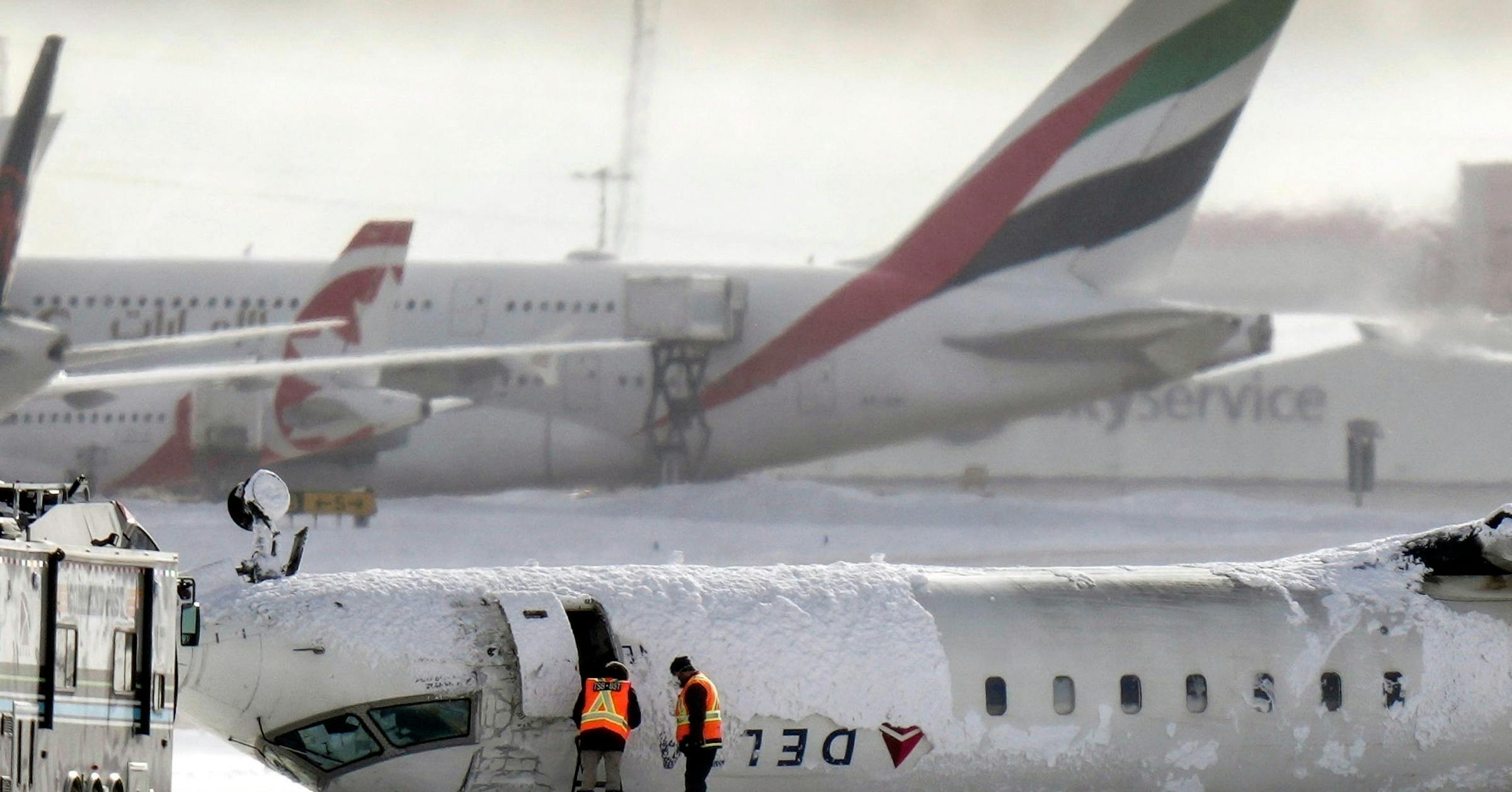
The Terrifying Descent: Unraveling the Details of a Miraculous Escape
The aviation world is still reeling from the near-catastrophic landing of a Delta flight in Toronto this past February. While the full picture is yet to emerge, a preliminary report has shed light on the terrifying moments leading up to the crash, painting a gripping picture of a rapid descent and a dramatic, upside-down landing.
The flight, originating from the Twin Cities, experienced a sudden, unexpected drop in altitude. This precipitous descent, the details of which are still being meticulously pieced together, was clearly outside of normal operating parameters. Eyewitness accounts, combined with data recovered from the flight recorders, are painting a clearer, albeit still incomplete, picture of the events. The speed of the descent was alarming, and the crew likely had very little time to react once the problem became apparent.
Crucially, the report highlights a critical failure of a portion of the right landing gear. The exact nature of this failure, whether it preceded the rapid descent or was a consequence of it, remains a central focus of the ongoing investigation. Understanding the cause-and-effect relationship here is paramount to determining the root cause of the incident and preventing future tragedies. Were there pre-existing mechanical issues that were missed during maintenance? Did a sudden, unforeseen event trigger the gear failure? These are among the many questions investigators are working tirelessly to answer.
The sequence of events following the landing gear malfunction is equally crucial to the investigation. The pilot’s response, under immense pressure and in a rapidly evolving situation, will be closely scrutinized. Did they take all the appropriate steps, given the sudden and unexpected nature of the emergency? The actions taken in the cockpit during those crucial seconds will be a major factor in determining the overall assessment of the incident. The bravery and skill displayed by the flight crew are undoubtedly being commended, but a thorough examination of their procedures is necessary to extract valuable lessons for future flight safety.
The aircraft’s ultimate landing—upside down—was a testament to the unpredictable and unforgiving nature of this incident. While miraculous, the upside-down position added another layer of complexity to the already precarious situation. It highlighted the immense forces at play and the extraordinary resilience of the aircraft’s structure. The investigation will thoroughly examine the aircraft’s structural integrity, both to understand why it withstood the impact and to identify any potential weaknesses that may need to be addressed in future aircraft designs or maintenance protocols.
The investigation is far from over, and the full picture may not be clear for many months. But this preliminary report provides an invaluable window into the chaotic moments before, during, and after the crash. It underlines the importance of ongoing vigilance in maintaining the highest possible safety standards in aviation. The information gleaned from this incident will undoubtedly contribute to improved safety protocols, helping to prevent similar occurrences in the future and safeguarding lives. The investigation’s conclusions will shape how airlines, manufacturers, and regulatory bodies approach maintenance, pilot training, and emergency procedures. The aim is not just to understand what happened, but to learn from it and build a safer future for air travel.



Leave a Reply